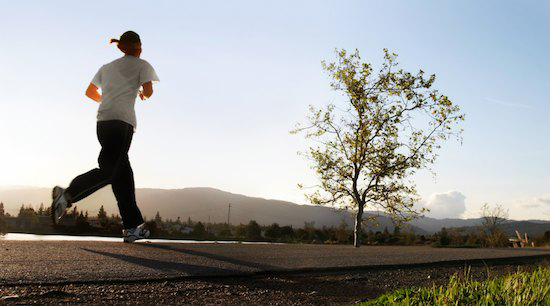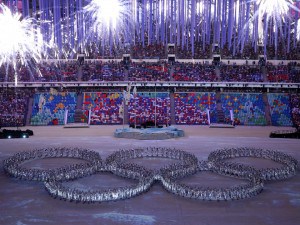
It’s been a month or so now and you continue to be inspired by your New Year’s resolution of being more active and healthy. Hitting the gym was the biggest change to your new found resolve of an active lifestyle, especially here in the Pacific Northwest, where rain and even snow have kept us from enjoying the great outdoors.
The gym is the best place to work on losing a few more pounds as well as conditioning your body for an active Spring and Summer season.
OSS hopes that you are on your way to your healthier lifestyle and offers a few reminders of how to stay safe in the gym and avoid one of five common gym-related injuries and build a safe and stable foundation for your success. These common injuries include foot and ankle, knee, lower back, shoulder and neck injuries.
Foot and Ankle Injuries: Cause, Prevention, and Treatment
The most common foot and ankle injury to new gym goers are stress fractures. Stress fractures occur when a former couch potato hits the gym doing too much without building a foundation. By not allowing your feet and ankles to adapt to the stress of loading and unloading the bones, and not allowing enough recovery time between workouts, stress continues building on weak bone structure.
Just as a pull tab on a soda can will break off as it is bent and unbent enough times, repeated stress on the small bones of the feet and ankles that have not been properly conditioned can snap and suffer a stress fracture.
Stress fractures can be prevented by:
- Starting slowly with any new weight bearing activities such as running on a treadmill
- Follow a sensible program of gradually increasing your workout by no more than ten percent week by week. (If that is a struggle, do less or stay at the same level for an extra week before increasing your workouts further)
- Be sure to wear proper shoes. Select in running or sports shoes that can assist in finding the right shoe for your activity and foot.
Treatments for stress fractures:
- Modifying workout to avoid weight bearing until pain lessens and the use of a stiff soled shoe for several weeks – Severe cases require the use of a cast or crutches. Healing can be a long slow process. Surgery may be necessary if the fracture fails to heal properly.
Knee Injuries: Cause, Prevention, and Treatment
Knee injuries are very common to gym goers and weekend warriors. More often than not, the cause involves weak muscles in the feet, ankles, hips and even the back. As you attempt to use muscles weaken from years of inactivity, it is easy to pull or twist the knee in an attempt to adapt to sharp or sudden changes in direction. Knee injuries may range from minor pulls and strains to major problems in dislocations, or torn cartilage.
Knee injury Prevention:
- Gradually working to strengthen core, hip, and foot and ankle muscles as all these work together to assist the knee in tracking in proper alignment.
Treatments for knee injuries:
- Standard R.I.C.E procedure (Rest, Ice, Compression, and Elevate) – If there is extreme pain, swelling or the knee seems misshapen, consult an OSS doctor as damage may require realignment of the kneecap or surgical repair to torn ligaments or cartilage.
Lower Back Injuries: Cause, Prevention, and Treatment
The risk of gym related lower back injuries is highest when first beginning an exercise routine. Moving too quickly and expecting weak muscles in your back, hips, and core to support your back and maintain proper spinal alignment is a sure formula for injury.
Lower back injury prevention:
- Warm-up before beginning a workout – Attempting to lift too much weight before you have built up a base, poor posture and lack of regular exercise leads to lower back injuries in and outside the gym.
- Proper recovery time – Acute lower back sprains occur when time is not taken to work up to higher weights used in many gym workouts. Overuse of muscles in the back causes tiny tears in muscle tissue, without proper recovery time between workouts, those microscopic tears do not have time to heal and strengthen the muscle. Chronic overuse can lead to sprains that are more serious or even disk injuries in the spine itself.
Treatment for lower back injury:
- Taking gradual steps to strengthen the muscles supporting the back, using good posture, avoiding sitting or standing in the same position for long periods of time, and scheduling weight training with days off for recovery will greatly reduce the chance of missing long-term workouts.
- Rest, over-the-counter pain medications such as aspirin or ibuprofen, medical treatments and gradually increasing exercise to strengthen the muscles of the lower back and core – In most cases, these steps will relieve lower back pain. If pain continues, is excruciating to the point it hinds daily activity, contact an OSS doctor. Traction or surgery is used as a last resort to treat severe lower back injuries.
Shoulder Injuries: Cause, Prevention, and Treatment
The large range of movement the shoulder has makes it at risk for injuries due to the repetitive movements during exercise. Rotator cuff injury, inflammation including tendonitis and bursitis, and compression of the bursa and tendons that leads to a condition call Impingement syndrome. The cause for most shoulder injuries is over training or improper form or techniques.
Simple guidelines for preventing shoulder injuries:
- Learning and using proper technique and form, warming up before exercising the shoulder by stretching the muscles by performing shoulder shrugs, stretches, and shoulder rolls, and begin a routine to gradually strengthen the shoulder muscles. – If injury does occur, do not try to ‘push through the pain. Doing so could lead to a serious rotator cuff injury requiring surgery. Treating shoulder pain and injury early is vital.
- Early treatment options include modifying exercise, ice or heat therapy, and the use of over-the-counter anti-inflammatory medications for pain control. Treating shoulder injuries may require consulting an OSS doctor to prevent long-term damage or loss of range of movement.
Neck Injuries: Cause, Prevention, and Treatment
Most neck injuries are muscle strain or over use. Tension from maintaining your neck in one position to long can cause pain in the neck and shoulders. Minor neck sprains may also result from twisting, attempting to lift too heavy a weight, or using improper form. Major life-altering damage, such as whiplash or fractures, can also occur to the neck when safety precautions and proper form is not consistently used.
Preventing neck injuries:
- Awareness – Remain aware of safety issues; do not leave free weights or other equipment where it will cause a falling or tripping hazard.
- Pay attention to proper form – Avoid sudden twisting or jerking movements. Know your own limits.
- Do not attempt heavy weights without a friend to spot for you or standby to help if needed.
- Always start slowly with a pre-workout warm up.
Treating neck injuries:
- Vary depending on the type and severity of the injury.
- Minor neck pain and strains from over use respond to treatment with rest and over-the-counter medications such as aspirin, within a few days.
- Ice therapy may also help during the first 24-48 hours of a minor injury – Serious injuries to the neck such as whiplash or fractures usually require immediate medical treatment. These injuries may require a neck brace, surgery, or traction. Consult with an OSS doctor as well as physical therapy is also part of the treatment for serious neck injuries. Treat all neck injuries seriously and do not attempt to ignore pain during a workout.
Dr. Joel Shapiro has this to say when you are in the gym, “Give up the push up. Pushups are hard on shoulders and there are better ways to strengthen triceps, biceps, pecs and deltoids. Work with a trainer on using the best form while working out. If you do sustain injury come in and see me for an evaluation.”
If you believe you are suffering from a gym-related injury and need specialized orthopedic care, Orthopedic Specialists of Seattle provide excellent treatment options available for you.
 As we thaw from this winter’s frost, our bodies will need to acclimate to warmer weather once again.
As we thaw from this winter’s frost, our bodies will need to acclimate to warmer weather once again. 
 The 2014 Sochi Olympics has had a fair share of injuries, none more so than the extreme sports that were added to the winter games as a way to attract a younger audience to watch and show interest in the Games.
The 2014 Sochi Olympics has had a fair share of injuries, none more so than the extreme sports that were added to the winter games as a way to attract a younger audience to watch and show interest in the Games.  According to
According to 

